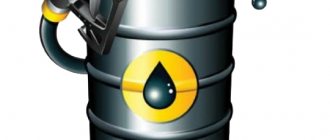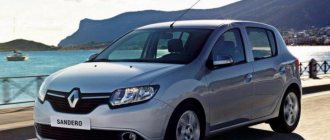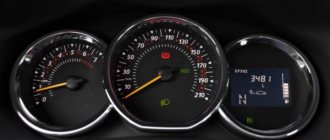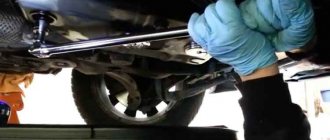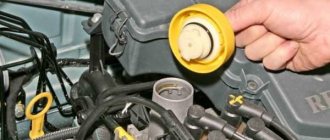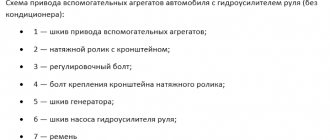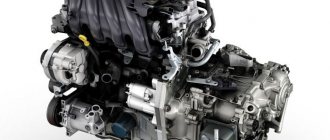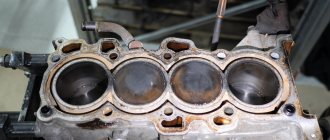Russian car enthusiasts were looking forward to the appearance of Renault Logan on the domestic market. The sedan became available for purchase in 2005, and two years later another modification of the car went on sale - a hatchback. If Logan's appearance in dealerships was known in advance, as was the car's debut on Russian roads, then only a small part of drivers knew about another member of the family - Renault Sandero Stepway. Nevertheless, the new product was enthusiastically received by the Russian public of lovers of inexpensive and high-quality cars.
Formally, the Sandero Stepway is not part of the Logan family, but the model was designed specifically on the platform of the aforementioned car. The new product appeared on the market in 2009, and in the shortest possible time won the love and trust of many fans of the Renault car group. The appearance of an SUV, high ground clearance, an attractive set of options and a variety of configurations - the manufacturer has endowed the model with all these qualities and characteristics. Of course, the durable power plant played a significant role in the popularization of the hatchback. Next we will tell you what the service life of the Renault Sandero Stepway engine is in practice.
What engine is it?
Renault Sandero Stepway is an incredibly popular hatchback in Latin America. First, the car was assembled in Brazil, and then the first copy of the car rolled off the assembly line of a car plant in Argentina. After some time, Moscow also started assembling the model. For a long time, the hatchback came only with a manual transmission. The fact that there was no modification with two pedals somewhat underestimated sales of the car. But already in 2011, a version with an automatic transmission appeared, which significantly influenced the overall sales dynamics of the Sandero Stepway. Now regarding the power plant. The base engine of the car is a 1.6-liter engine with two different boosts - 84 and 116 horsepower.
Other important engine characteristics:
- in-line arrangement of cylinders;
- number of cylinders – 4;
- number of valves – 16;
- torque – 145 Nm;
- maximum speed – 165 km/h.
In 2012, the second generation of the model, the Renault Sandero Stepway 2, was presented at the Paris Motor Show. The appearance of the car has changed radically, and the functionality has become more diverse and attractive. The range of power plants remained virtually unchanged. The hatchback can be purchased in three trim levels. The base, as before, remained the 1.6-liter engine with the H4M index. The Renault-Nissan H4M-HR16DE engine is an evolution of the “Renault” K4M, the latter was modernized by the two aforementioned companies in 2004.
Engine design features
One of the most popular K7J power units, produced by the Romanian division of the company, is equipped with a significant part of the cars.
K7J engine for Renault Logan 2006. One of the most widely installed engines on this model.
If you look closely, you can see in the K7J some features characteristic of the ExJ series, produced by Renault in the eighties of the last century. Such “archaisms” include the chain drive of the oil pump, old types of timing rocker arms, as well as the method of placing some parts. Other solutions for the 1.4-liter engine are practically no different from other single-shaft engines from the SOHC family.
This is the same in-line arrangement of cylinders in a vertical layout, the presence of two valves per cylinder, as well as a combined lubrication supply system. However, all this does not diminish the advantages of the engine, which is capable of operating without “capital” for about four hundred thousand kilometers. At the same time, Renault Logan with this power unit can accelerate to “hundreds” in thirteen seconds, maintaining a maximum speed of 162 kilometers per hour.
Engine K7M
A less popular 1.6-liter 8-valve engine is the K7M. The K7M version with an increased volume differs little from its “younger brother”, only in the piston stroke, which has become 10.5 millimeters longer. In addition, a different type of clutch and a flywheel with a larger diameter are used. This made it possible to increase dynamic and speed performance by almost 10 percent. But the disease with the fragility of the clutch cable could not be avoided, so replacing the clutch cable is familiar to most Logan drivers.
Engine K4M
The most powerful 16-valve engine in the line. This engine was installed on the LUX version of the car.
It includes a pair of lightweight camshafts as well as an all-new piston system. There is no need to adjust the valves too much, since the design contains hydraulic compensators. At the same time, “one hundred” is reached in 10.5 seconds, and the maximum speed will be 180 kilometers per hour.
Design features of the motor
The H4M engine is maximally adapted to Russian operating conditions. Even the VAZ automobile plant adopted the motor, equipping the Lada X-Ray crossover with a similar power plant. To reduce the weight and dimensions of the engine, an aluminum cylinder block was taken as the basis for the new power unit. The aluminum construction allows for faster engine warm-up and reduces energy losses due to fuel combustion. Thus, it can be noted that the manufacturer focused on increasing the efficiency of the installation by borrowing modern technologies for the production of resource-intensive engines from leading companies.
In previous “renault” engines K4M and K7M, a belt was used as a timing drive, but in the H4M it was decided to equip it with a high-quality chain. In the H4M-HR16DE it is reliable, on average it lasts for 120-150 thousand kilometers. The timing drive can fail ahead of time, but for this the driver himself must create unfavorable operating conditions for the car: constant high loads, engine overheating, and the use of low-quality working fluids. The first symptoms of a faulty circuit are the appearance of a characteristic crackling sound from the engine during operation.
Renault Logan Stepway and Sandero Stepway, suspension. Gearbox motors and their service life.
Renault Logan and Renault Sandero
of the second generation, produced since 2014, would be restyled in 2021, also in 2021, the
Logan Stepway version was released,
and the Sandero Stepway hatchback was restyled.
In this article, I want to talk about the suspension, engines and gearboxes of the Logan Stepway and Sandero Stepway, as well as their service life.
Cost of Stepway versions:
- Logan Stepway
718 — 906 thousand rubles; - Sandero Stepway
761 — 945 thousand rubles.
In the cabin,
everything is budget and no frills, the plastic is hard like all cars in the B class. The trunk volume of the Logan Stepway is 510 liters, while the Sandero Stepway hatchback has 320 liters.
Front suspension is traditional
for state employees, the front is MacPherson, and the rear is a semi-independent torsion beam.
The suspension is famous for its energy intensity, and the increased ground
clearance of 195 mm allows you to drive a little further on rough roads than you would on the standard versions of these cars.
For comparison, the ground clearance of the Korean bestseller Hyundai Creta is 5 mm lower and amounts to 190 mm.
Three power units:
- 1.6 l, 82 hp,
old and proven eight-valve engine, Renault concern, with a cast-iron cylinder block and timing belt drive, plug-in engine, so
you need to remember once every 60 thousand km.
change the timing belt kit. , the kit is not expensive and costs from 3.5 thousand rubles, there are no hydraulic valve compensators here, checking the thermal clearances is required every 80 thousand km.
The average engine life before the first overhaul is 350-400 thousand km.
, but there are also specimens with longer, longer runs.
Five-speed manual gearbox;
- 1.6 l, 102 hp
,
one of the concern’s most reliable engines,
is currently paired only with a four-speed automatic transmission; there is no longer a manual version.
The cylinder block is cast iron, the timing drive is belt driven, the motor is plug-in, so you need to remember once every 60 thousand km. change the timing kit, the kit is not expensive and costs from 5 thousand rubles. The engine is equipped with hydraulic valve compensators. The average engine life before the first overhaul is 400+ thousand km; - 1.6 l, 113 hp,
the engine has been installed since 2010, on Nissan Qashqai, Nissan Juke, Renault Fluence, Renault Kaptur cars, and also recently,
the engine began to be installed on Lada Vesta and Lada X-ray.
The cylinder block is aluminum, there is a chain in the gas distribution drive that requires replacement every 180-220 thousand km, there are no hydraulic valve compensators, checking thermal clearances is required every 90 thousand km.
There is only one phase shifter, on the intake shaft. The average engine life is 350-400 thousand km. The gearbox is five-speed manual or continuously variable, CVT, a similar variator is installed on the Lada Vesta and Lada X-ray.
- Five-speed manual,
it lasts 350-450 thousand km before the first overhaul, depending on operation and conditions, servicemen recommend changing the oil every 70-80 thousand km,
the clutch is enough for 130-160 thousand km; - Automatic four-speed gearbox,
150-200 thousand km before the first repair, servicemen recommend changing the oil every 50-60 thousand km; - A variator,
a continuously variable transmission, raises many questions and disputes (
I have already discussed this box in detail, an article dedicated to the variator can be read here
). It is advisable to change the oil in the box every 40 thousand km,
the box does not like increased loads, its service life directly depends on operation and maintenance and is within 150-300 thousand km.
Repairing the box is not a cheap pleasure and can cost 50-100 thousand rubles.
Potential resource of the Renault Sandero Stepway 1.6 power unit - N4M
There are no hydraulic compensators in the H4M, so every 100 thousand kilometers you will have to independently adjust the valve clearances. The system has a phase regulator, it is installed on the exhaust camshaft. In general, the mechanism is characterized by stable operation and a long service life. There were no complaints about the phase regulator from the owners of Renault Sandero Stepway. Based on the experience of operating cars with a K7M and K4M engine under the hood, we can assume the likely service life of the evolved modification of the unit - H4M-HR16DE.
There is information on the network that this engine supposedly runs for 200-250 thousand kilometers. Many sources claim the resource based on the manufacturer's statements. It is worth saying that the figure of 250 thousand kilometers is guaranteed. That is, this is the minimum mileage threshold that a Renault Sandero Stepway with an H4M engine can overcome. With timely and proper maintenance, the engine will easily cover 400-450 thousand km. To do this, the following must be observed:
- Use only original engine oil prescribed by the manufacturer of the unit. The engine base is aluminum, therefore, it is necessary to constantly monitor the quality and condition of the system’s working fluids. This number includes not only lubricant, but also coolant. Elf oil is best suited for a hatchback.
- When servicing the H4M-HR16DE, use only air and fuel filters that are suitable for this engine version. For preventive purposes, check the CVTC valves; it is strictly forbidden to allow the fluid coupling to starve. Air filters play a significant role in the production of the entire resource of the installation. Saving on elements that, at first glance, seem not so significant, can subsequently lead to serious damage.
By following simple rules and recommendations, each owner of a Renault Sandero Stepway will allow the car’s power unit to fully develop the potential and resource laid down by the manufacturer.
Engine life of Renault Sandero Stepway 1.6
Russian car enthusiasts were looking forward to the appearance of Renault Logan on the domestic market. The sedan became available for purchase in 2005, and two years later another modification of the car went on sale - a hatchback. If Logan's appearance in dealerships was known in advance, as was the car's debut on Russian roads, then only a small part of drivers knew about another member of the family - Renault Sandero Stepway. Nevertheless, the new product was enthusiastically received by the Russian public of lovers of inexpensive and high-quality cars.
Formally, the Sandero Stepway is not part of the Logan family, but the model was designed specifically on the platform of the aforementioned car. The new product appeared on the market in 2009, and in the shortest possible time won the love and trust of many fans of the Renault car group. The appearance of an SUV, high ground clearance, an attractive set of options and a variety of configurations - the manufacturer has endowed the model with all these qualities and characteristics. Of course, the durable power plant played a significant role in the popularization of the hatchback. Next we will tell you what the service life of the Renault Sandero Stepway engine is in practice.
Reviews from car owners
The H4M-HR16DE is better in all respects than previous “renault” installations. This engine is lighter, free from some “chronic” diseases, consumes less fuel, while the new version of the unit is torquey and economical. As mentioned above, the car is adapted to Russian operating conditions, but in some cases minor problems are inevitable. For example, in regions with a frosty climate, it may be difficult to start the engine. Owner reviews will tell you in detail how to deal with difficult starting and what the service life of the Renault Sandero Stepway 1.6 engine is:
- Matvey. Moscow. I have a 2012 Renault Sandero Stepway 1 with a 1.6 liter Nissan engine. I've already driven 140,000 kilometers on this car. I travel a lot, several times I went on long trips around the country. I have no complaints about the build quality or engine performance. A stable power unit that pleases with efficiency and speed. There were also no problems with startup. The oil doesn’t “eat”, so I fill it with Elf. The car does not “suffocate” while overtaking; it feels confident on the highway, just as in the city. Overall, I give this model a solid five.
- Yaroslav, Yalta. I purchased Sandero Stepway in 2015, a second generation car. During this time I covered 45 thousand kilometers. I do not recommend that owners of a new hatchback rev up and load the engine at first. Refuel only with high-quality fuel; I fill it with AI-95 myself. It’s difficult for me to talk about the quality of the engine, but so far I’m happy with everything. A small drawback - there is no special dynamics felt. From oil change to oil change, if you turn it at 3500-4000 rpm, then, naturally, the engine will “eat” oil. I am sure that with proper maintenance the H4M-HR16DE will last more than 400 thousand kilometers.
- Igor, Stavropol. Renault Sandero Stepway, second generation, produced in 2016, 28 thousand kilometers on the odometer. I took the car from the showroom in the maximum configuration. After the run-in, I filled the original Elf with OD, and the engine, it seems to me, began to run quieter and smoother. Iridium spark plugs, haven't changed them yet. Since the mileage is low, I can’t say anything about the condition of the chain. Nothing rattles - it’s already pleasing. The automatic transmission also works properly, but sometimes the car jolts when changing gears. No more complaints. Experts say that the hatchback engine is capable of covering about 500 thousand kilometers. I think this is a very realistic figure if you don’t skimp on maintenance.
- Mikhail, Voronezh. My Sandero Stepway is still new, I bought it at the showroom, basic equipment, five-speed manual, built in 2017. Everyone likes the car: interesting design, high ground clearance, which is relevant for the region in which I live. I measure the oil every 5-7 days; at a service station one technician said that this engine can “eat” lubricant. But in reality, everything is normal. I've covered 20 thousand km in a year, now I fill it with Elf 5W30, and I feel like the engine has become quieter. There are a lot of examples and acquaintances who have driven more than 400 thousand kilometers in a car with the same Nissan engine.
- Yuri, Kaliningrad. I used to drive a Renault Logan, but already in 2010 I switched to Sandero Stepway. I like the first generation car. Now the odometer shows 210,000 km. I replaced the chain, its service life was 150 thousand kilometers. The mechanics said that the timing drive could last longer, but, apparently, I put a lot of stress on the engine, since I can’t drive calmly. In terms of dynamics, the H4M is noticeably more energetic than the K4M and K7M, no matter how much there are 116 horses under the hood. For 15,000 kilometers traveled, I add approximately 1 liter of oil. Now about all the problems that occurred during my operation of the car: one day, at a load of 2000 rpm, the phase regulator began to knock. As a result, I had to change the filter. The valve was fine. No more problems. In terms of service life: reliable engine, mileage is more than 200 thousand, and it’s like new. The figure of 400 thousand does not seem so exorbitant.
- Grigory, Moscow. In 2012, he became the owner of a Renault Sandero Stepway, and recently passed the 150,000 kilometer mark. Most of the mileage is in the capital. After about 90k, I started adding a little oil. Every 8-10 thousand km I change the lubricant, I prefer Elf 5W30. The driving style is neat: I don’t jerk from a place, calm and measured movement. The engine didn't cause any problems. I haven’t even changed the chain yet, although it’s already due, but I don’t hear any clangs or knocks while the unit is running. What's the result? I walked 150k easily and naturally, without any problems or major breakdowns. The consumption is pleasing, as is the dynamics of the car. The car will go at least that long. I'm sure of this.
The hatchback with an engine installed under the hood, jointly developed by Renault and Nissan engineers, was loved by many drivers for a reason. The Sandero Stepway is good not only for its price and variety of configurations; the car’s engine is structurally simple and has been studied in detail by specialists. According to the manufacturer, its service life is 250 thousand kilometers, but do not confuse the warranty indicator with the actual one.
In practice, cars with an H4M engine travel 400 thousand kilometers. In order for the installation to fully exhaust its service life, it is necessary to create optimal conditions for engine operation in every possible way. There is no need to save on car maintenance and, moreover, put off the regulated maintenance “for later”. It is also important to “feed” the car with high-quality gasoline.
Transmission
A version with automatic transmission appeared in the summer of 2011. Until that time, only a 5-speed manual transmission was offered, which was paired exclusively with the 8-valve 1.6.
The manual transmission was different from the one installed in the regular Sandero. The Stepway used a JR5 gearbox, and the Sandero used a JH3. In addition to other gear ratios, the raised version used a hydraulic clutch drive and a cable gear selection mechanism.
The drive shafts are also different. There is no vulnerable left drive seal boot, which often leaked. This means you won't have to worry about transmission fluid leaks (at least for now).
A manual transmission clutch usually lasts more than 100-150 thousand km (from 5,000 rubles per set).
The 4-speed automatic DP2 was relied upon only by the most powerful 16-valve 1.6. The gearbox shifts are almost imperceptible, and it is tuned for a sedate ride. An automatic transmission is not suitable for traffic light racing or dynamic overtaking. Fortunately, there are no serious problems with it.
Technical characteristics of Renault Sandero
Renault Sandero belongs to the segment of vehicles of category “B” and is a classic version of a five-door hatchback. Sandero is relatively new, since the first copies of the car rolled off the assembly line in 2008. To date, their release can be divided into two main stages.
The first Renault Sandero, released between 2008 and 2014, had a fairly wide product range. The second stage of production was marked by a slight restyling; it began in 2014 and continues to this day.
Numerous photo and video reviews of new cars confirm significant improvements both in appearance and in technical terms.
The basic modification, the design of which was the basis of the Renault Sandero model, was a budget representative of the model range of the French leader in the automotive industry - Renault Logan. Development of new items on those.
based on the aforementioned Logan began back in 2005 and both the main platform and many elements of other nodes were borrowed from it.
Video and photo reviews, as well as comparisons of these representatives of the model range confirm the presence of a large number of similarities not only in the functional part, but also in interior details, as well as in technical characteristics. The exteriors of these cars had nothing in common, except for the logo of the French car brand.
Engine range
The first stage of Renault Sandero, which were produced from 2008 to 2014, was equipped with gasoline power units with a volume of 1390 cc. cm and 1598 cc. The Renault Sandero 1.4 engines had 75 hp. (55 kW and 5500 rpm).
The torque reading was 112 Nm and 3000 rpm. In this case, the injection principle of fuel supply with distributed injection was provided. The engine was located transversely in the front of the car.
Renault Sandero 1.4 was equipped with a five-speed manual gearbox.
Renault Sandero 1.6 hatchbacks were equipped with a choice of two types of engines - with a power of 84 hp. and 102 hp The less powerful power unit was installed in conjunction with a five-speed manual transmission.
The 102-horsepower engines, in addition to mechanics, also worked with a four-speed automatic gearbox. The cylinders in the power units were arranged according to the traditional layout for cars in this segment - L4.
The total number of valves per cylinder is 4, with the exception of the version with an engine capacity of 1.4 liters, where this figure is 2 units.
The modernized Renault Sandero, the production of which started in 2014, was equipped with engines from those. volumes of 1.2 (75 hp) and 1.6 liters (82 and 102 hp to choose from). At the same time, all updated copies were equipped with a five-speed gearbox, and the technical characteristics of the engine were not much different from their predecessors.
Dimensions and operating data
When reviewing tech. Dimensions and characteristics of the described car, it is worth noting that the length of the five-door hatchback is 4020 mm, its width is 1746 mm, and its height is 1534 mm.
The ground clearance has quite impressive characteristics for vehicles of this type and is 155 mm.
The wheelbase of the car is 2588 mm, despite the fact that the front wheels are located 1480 mm apart from each other, and the rear wheels are 1469 mm apart.
The curb weight of the first generation Renault Sandero model is 1062 kg and 1137 kg for hatchbacks, depending on the choice of engine size. The capacity of fuel tanks for all modifications is the same - 50 liters.
The trunk volume did not have any outstanding performance and was only 320 liters. But with the rear row seat folded down, the tasks of transporting large cargo were significantly simplified.
Thus, the cargo volume of the trunk increased to an impressive 1200 liters.
The updated Sandero, whose production started in 2014, differed from the first model range in terms of technical dimensions and characteristics. So, the length was 4080 mm, width 1757 mm, and height 1523. The ground clearance remained unchanged.
Brake system and suspension
In all modifications, without exception, the front brake mechanism has a disc design, while the rear brakes are drum brakes.
Review of tech. The suspension design and its characteristics confirm the appropriate use of a MacPherson-type mechanism with a triangular lever in the front part. The rear mechanism is semi-independent and operates on the basis of springs and a vertical shock absorber. Descriptions and video reviews of test tests of the suspension of these cars note its long travel and moderate elasticity.
Interior
The interior of the Renault Sandero, as can be seen from many photo and video reviews, is in many ways similar to the base Logan. The difference in the driver’s area is the improved shape and structure of the visor above the dashboard, which in the described modification is made of a softer material.
A decorative insert has also appeared on the center console, imitating an aluminum design element. The air ducts have an individually pronounced edging, which immediately catches the eye when looking at the photo of the Sandero interior.
Unlike Logan, Sandero's front doors are equipped with full handles on the inside for opening them.
As an additional option, the buyer can choose to install a second airbag in the cabin. Basic versions are equipped only with an airbag for the driver.
The driver and front passenger seat belts have an improved pretensioning and force limiting system. Those. A crash test safety review of the Renault Sandero confirms its budget performance.
It received only three stars for adult occupant safety.
Source: https://PortalMashin.ru/sandero/rensan-specification/tehnicheskie-harakteristiki-reno-sandero.html
Posts 1 to 25 of 27
1 Topic by Lelik 2008-01-01 12:34:27
- Lelik
- I live here
- Inactive
- Details
- Ads
- BeS
- I live here
- Inactive
- Details
Topic: Engine idle speed
Happy New Year everyone. I immediately apologize if this question was raised, but the search did not help. What should the engine speed be? On my Logan they stay at 500 rpm. The mileage is 800 km. Thanks to everyone in advance.
2008-01-01 12:47:23
2 Reply from BeS 2008-01-01 12:47:23
- Edward
- Active participant
- Inactive
- Details
- mekena
- Member of Logan Club
- Inactive
- Details
Re: Engine idle speed
Happy New Year to you too.
RPM in Logan starts at 500. That is, 750 is the norm. You've got it all together.
3 Reply from Eduard 2008-01-01 12:47:24
Re: Engine idle speed
4 Reply from mekena 2008-01-01 12:48:10
- Lelik
- I live here
- Inactive
- Details
- mekena
- Member of Logan Club
- Inactive
- Details
- AlexK266
- Regular
- Inactive
- Details
- mekena
- Member of Logan Club
- Inactive
- Details
- Tank
- I live here
- Inactive
- Details
- mekena
- Member of Logan Club
- Inactive
- Details
- GOSHA
- Member of Logan Club
- Inactive
- Details
- BOA
- Regular
- Inactive
- Details
Re: Engine idle speed
That's how it should be - everything is ok!
Suzuki SX4 New (S-Cross)
Logan Ambiance-1.6 (2006-2014)
5 Reply from Lelik 2008-01-01 13:45:16
Re: Engine idle speed
Thanks everyone for the answers. You reassured me. Once again, Happy New Year to everyone: alc:
6 Reply from mekena 2009-02-12 18:13:55
Re: Engine idle speed
Changed the oil and air. filter and at idle the tachometer needle began to show 750, and before it showed 500 - it was strictly in the middle up to 1000 thousand, and now it’s at the 3rd division. What could this mean? (filled with Elf Evolution oil)
Suzuki SX4 New (S-Cross)
Logan Ambiance-1.6 (2006-2014)
7 Reply from AlexK266 2009-02-12 18:27:03 Edited by AlexK266 (2009-02-12 18:27:59)
Re: Engine idle speed
started showing 750, but previously showed 500
It's strange, but I always had 750,
500 is not enough.
8 Reply from mekena 2009-02-12 18:30:05 Edited by mekena (2009-02-12 18:31:17)
Re: Engine idle speed
So I’m thinking - maybe the air vent was so clogged that it didn’t allow the engine to idle freely? I mean, the air flow was bad or the oil was affecting it.
Even earlier, I also showed 750, I don’t even remember when I started showing 500.
Suzuki SX4 New (S-Cross)
Logan Ambiance-1.6 (2006-2014)
9 Reply from Tank 2009-02-12 21:28:37
Re: Engine idle speed
started showing 750, but previously showed 500
So 750 is when the second (small) division is, and 500 is the very first bold one.
10 Reply from mekena 2009-02-12 21:41:05
Re: Engine idle speed
Tank In short, there used to be an arrow in the middle of the interval up to 1000, now it’s at 2/3.
Suzuki SX4 New (S-Cross)
Logan Ambiance-1.6 (2006-2014)
11 Reply from GOSHA 2009-02-12 23:11:44 Edited by GOSHA (2009-02-12 23:30:53)
Re: Engine idle speed
The tachometer of our car, or rather its readings, starts at 500 rpm. (“fat” risk). Next (“thin” marks) – 625, 750, 875 and again “thick” marks – 1000 rpm. On “cold”, in the morning (for me) 1125-1250, and after warming up - 875-750. When at night I turn on the lights + foglights + wipers (if it’s raining) + heated rear window + air conditioning (to remove fogging from the windows) + the radio works - the idle rises just above 875 (to about 900 rpm) Winner is a witness to this. Therefore, when I’m driving with all these additional power take-offs, I don’t feel that the car is losing acceleration dynamics or when driving uphill in 5th gear.
Bye bye.
12 Reply from BOAC 2009-02-13 00:18:31
Body and paintwork
The body of the Renault Sandero is galvanized, and the body iron itself is quite durable. These cars rarely rust; corrosion mainly occurs if the car has been in an accident. The paintwork on the body is not bad, chips primarily appear on the wheel arches, in the area of the sills.
What disadvantages do engines have?
There are no powerful engines in the Sandero line of power units, and you can’t count on sportiness here. The most popular is a four-cylinder engine with a volume of 1.4 liters and a power of 72 or 75 horsepower (8 valves).
The car is also equipped with a 1.6 liter internal combustion engine in two modifications:
16-valve – 84 l. With.;
8-valve – 106 l. With.
The 1.4 liter engine is somewhat weak, its thrust is not enough for a relatively heavy car. Often this motor operates at the limit, and the life of the power unit depends
is noticeably reduced. The 1.6 liter 8-valve internal combustion engine is also not very powerful, but it is enough for city trips. With a 16-valve engine, the Sandero has enough dynamics, but the car consumes noticeably more fuel.
Timing belt
for 16th grade It is recommended to change the internal combustion engine of the K4M model every 60 thousand kilometers; it is better to replace parts of the gas distribution mechanism as a set (belt, water pump, tension rollers).
The Renault Sandero engine range also includes a 1.5 DCI diesel engine; depending on the modification, its power ranges from 80 to 90 hp. With. The K9K diesel power unit is highly efficient and has good traction, but in Russia Sandero cars with diesel engines are rare
.
The gasoline engines installed on Sandero are quite reliable, but they still encounter some problems. One of the characteristic "diseases"
– jamming of the thermostat; with such a defect, the motor may overheat or, conversely, operate at low temperatures.
Spark plugs and high-voltage wires
do not “live” for too long ; they often break through due to dampness.
Sandero gasoline engines have a very good service life; with proper care and careful operation, they last 500 thousand km.
and more until major repairs.
Weaknesses in transmission units
Only two types of transmission are installed on the hatchback:
5-speed manual transmission;
4-speed automatic transmission.
The automatic transmission is paired with a 16-valve 1.6-liter engine, while the manual transmission is paired with an 8-valve engine.
The manual transmission is quite noisy
, but at the same time no defects are detected in it - gears are switched smoothly, without jerking, speeds do not slip. Even at engine speeds of three thousand or more, vibration appears on the body, it comes precisely from the manual transmission.
The manufacturer does not provide for changing the oil in the “mechanics”; the lubricant should be enough for the entire service life of the gearbox. But if the transmission has already covered 100 thousand km
, it’s better to change the oil in the unit, it won’t make things worse.
Four-speed automatic transmissions are not particularly reliable; automatic transmissions mostly fail due to overheating
. An automatic transmission often requires repairs after a mileage of about one hundred thousand kilometers; the oil in an automatic transmission should be changed after 50 thousand km.
Chassis and sores in the suspension
The rear suspension on the Sandero is a beam type, the front is a standard MacPherson strut. The design of the car's chassis is quite simple, so suspension elements generally fail rarely. Spare parts for the car are relatively inexpensive, and repairing the chassis is not very difficult.
Bushings and stabilizer struts are the first to be “surrendered” on Renault Sandero.
, they serve on average 50-60 thousand km. Rear and front shock absorbers are sensitive to the quality of the road surface and begin to leak quickly if the car is often driven on bad roads. But in any case, the service life of these parts is at least forty thousand kilometers; the original shock absorbers last longer (70-80 thousand km each).
Steering rack
not very “tenacious”, first of all the plastic bushing wears out. The manufacturer did not provide repair kits for the rack, but parts can be supplied from another car model, for example, from BMW. Before repairing the steering mechanism, you should check the play in the tips and rods, the service life of which is 60-70 thousand km.
Life time
front brake pads are standard - on average about 30-40 thousand km. If you lubricate the guides of the front calipers, the pads may last longer, and the service life of the parts largely depends on your driving style.
Vehicle interior
The interior of the Renault Sandero is nothing special - the interior looks gray and somewhat dull. But there is enough space inside the car, but the trunk of the car is small (320 liters), although if you fold out the rear seats, it becomes quite roomy (1200 liters). The plastic interior is not of very high quality, but the Sandero still belongs to the budget class, and therefore you should not expect the best from the interior trim here.
Most drivers have already come to terms with the fact that all the cars that are currently appearing on the market look quite monotonous.
Their design and technical parameters become almost identical, differing only in small nuances.
But with the advent of the new version of Chery Tiggo, sales of which started in the first days of the second week of August, the situation has changed dramatically. This car has its own unique appearance and is ahead of all its closest competitors not only in characteristics, but also in cost, which is set within fairly reasonable limits. This, at first glance, an ordinary car, upon closer examination, has a considerable number of technical features.
It can be opened using a smart watch, the available multimedia system and air conditioning are controlled using gestures.
The heating function is provided for all seats, steering wheel, windshield and even its washer nozzles. The car is a crossover with a two-liter engine and costs only a million rubles.
The differences between the machine and other models of this class are expressed in the following features:
Feature 1.
Availability of smart watches. This gadget is offered as standard when purchasing the top-end Techno package. According to the manufacturer, this device is called a smart key bracelet, but in fact, it is more like a watch, especially since one of its main functions is to show the time. In addition, it can be used to raise and lower windows, open and close car doors, and even start the engine from a distance. Assistive functions include notification of messages and calls, event reminders and step counting, mileage traveled and calories burned, as well as phone search. Synchronization is possible with both Android and iOS. Designed to withstand pressure when submerged underwater to a depth of 30 meters. The car became a pioneer in the compact crossover class, with a similar device included as standard.
Feature 2.
Gesture control. This vehicle allows you to control some functions using gestures. For example, holding your finger in front of the screen makes it possible to switch tracks, lightly wiggle your finger to adjust the volume, bring your open palm to the sensor to switch to control the air conditioning system, and so on.
Feature 3.
Electronic assistants. This model is characterized by the presence of a large number of electronic systems, which are already included in the basic package. In addition, the car is equipped with a monitor, the largest diagonal in its class - 7 inches, with variable backlight tone, a temperature and tire pressure monitoring system, and a smart lighting system. In addition, the body was galvanized with elements made from five types of high-strength steel. The warranty period is 5 years or 150,000 km.
When I ordered a new Sandero for myself, the manager in Petrovsky sent the order to the head office, then we drove the new Logan and during the preparation of the preliminary contract they called him from Renault Russia with the news. The news was that the specification of the machines (letters in the code) had been changed. He found out exactly what happened only after 2-3 weeks and called me back. The essence of the changes: new engine, 113 hp. He didn’t tell me anything more specific, because...
Did not know. Well, now this news has appeared on the Internet.
Here I sit and drool. The price should increase by 15,000 rubles, and my Sanerik according to the configurator - 708,960 rubles.
Here's a quote from one site:
There is a new addition to the engine range of Renault Logan, Sandero and Sandero Stepway - now a 16-valve 1.6-liter petrol engine with a power of 113 hp is available for these models. It is paired only with a five-speed manual transmission. The declared fuel consumption is 6.6 liters. There is no word yet on when the new items will go on sale.
The HR16 engine, new for the line of French “state employees,” was developed by Alliance specialists, and its production was launched at the AVTOVAZ facilities in Tolyatti.
According to another site, we find out that this engine is being removed from the Lada Xray:
According to Kolesa.ru, dealers received an information letter from AVTOVAZ, in which the manufacturer warned that it would cease production of 110-horsepower modifications of the Lada Xray.
It is assumed that with the departure of the Lada Xray with the Nissan HR16 engine, the list of trim levels with the VAZ 16-valve engine with a power of 106 hp will be expanded, in particular, the Top version and additional option packages will appear.
For what reason the company decided to abandon the installation of HR16 on the Lada Xray is unknown.
It is not yet known from what date dealers will stop accepting orders for 110-horsepower modifications. As reported by the AVTOVAZ press service, today the model with the HR16 engine remains on the assembly line.
After googling, we find data on this motor:
The Renault-Nissan H4M-HR16DE engine is an evolution of the Renault K4M; it replaced the QG16DE in the Nissan line. The engine is not bad, it is not demanding on gasoline, with the recommended 95, you can use 92. The timing system uses a chain, here it is quite reliable and its early stretching will not bother you. There is a variable valve timing system, a phase shifter is installed on the intake shaft, an electronic throttle valve is used, but the valve clearances on the HR16DE need to be adjusted; there are no hydraulic compensators. The gaps are adjusted by selecting a pusher, approximately every 80-100 thousand km. Engine noise and knocking are the main signs of an imminent trip for adjustment.
This engine has been modernized, the camshafts have been changed, two injectors are now installed on each cylinder, fuel economy has increased, power has increased slightly, idle speed has decreased, the engine has begun to comply with Euro 5 requirements and other, less significant, transformations.
